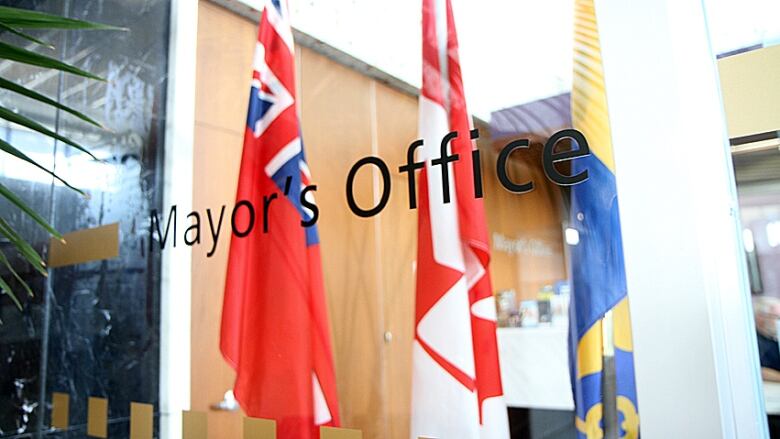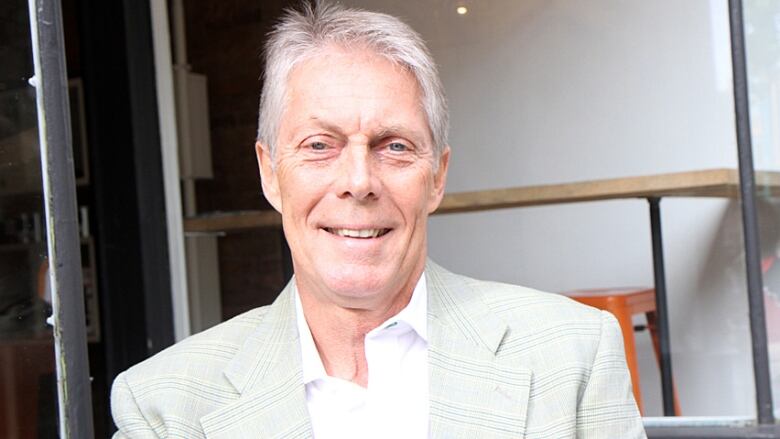Campaigning with $1B: Fact checking Hamilton's mayoral platforms

There are 15 people running for mayor, but the two biggest names are incumbent Fred Eisenberger and political newcomer Vito Sgro.
During election campaigns, it can be hard to separate hard truths from the spin.So wetook a look to see how the mayoral messages measureup.
The other candidates are MichaelPattison, Ute Schmid-Jones, George Rusich, Henry Geissler, Edward HC Graydon,Phil Ryerson, Nathalie Xian Yi Yan, Todd May, Carlos Gomes, Ricky Tavares, Paul Fromm, Jim Davisand Mark Wozny. The election is Oct. 22.
Vito Sgro
Sgro is a retired accountant and Liberal campaign organizer. His message in one sentence: vote for me and I'll stop LRT.

Using$1B for other infrastructure
The fate of the $1 billion committed by the province forLRT has become the most heated question of the election, largely because of Sgro'sinsistent "Stop the train" message.
Eisenbergersupports the planned $1 billion light rail transit (LRT) system, which is why Sgro calls it "Fred's train." LRT isalready about two years and more than $100 million into being implemented, but the city hasn't yet signed a legally binding master agreement.
The system would run alternately down Main and King streets fromMcMasterUniversity toEastgateSquare. It would mean about five years of (possibly phased) construction. In 2015, the Wynnegovernment promised the full cost ofMetrolinxbuilding anLRTin Hamilton. Then the PC party was elected and said Hamilton could use the $1 billion for LRT, other transit and/or other infrastructure.
Sgrosays he wants to use $300 million of that $1 billion for express buses and the rest for other projects including widening Rymal Road and funding one of Waterdown's two bypass projects. (Eisenbergersupports the city putting money toward the latter too, but not LRT money.)
There's been some skepticism whether there really is $1 billion with Hamilton's name on it. There aretwo reasons critics cite:one is that's not really how government fundingtypically works, and two, this is a government that has been actively cutting spending.
DonnaSkelly, PCMPPforFlamborough-Glanbrook, saysit's there.
"Yesterday I spoke directly with the premier,"Skellysaid Friday.
"The premier once again confirmed that the $1 billion funding can be spent on infrastructure, infrastructure andtransit, or solely onLRT."

If Hamilton gotthe full $1 billion, including $700 million forinfrastructure, it would be an unusual way for a city to get government funding.
The $1 billion isn't sitting in a bank account right now, and for LRT, the province doesn't need to come up with it right away. Under the plan set out by the previous provincial Liberals, LRT would be financed against future revenue the system generated.Metrolinx is hiring athird party todesign, build, finance, operate and maintain LRT.
Under Sgro's$1 billion for local spending promise,the Ford government would need to find up front money and may actually end up more out of pocket than it would for LRT. That is, unless it finds away to fund the alternative approved projects using the same financing model as LRT.
Under the LRT plan, about 80 per cent of the money would be spent on infrastructure, although much of the work along the LRT corridorisn't neededfor another 50 to 80 years. Exceptions include the 63-year-old Longwood Road bridge that crosses Highway 403.
Two other big questions remain. The PC government still hasn't saidwhat the criteria for approval would be, or when it might be released. Itmay not come before the next crucial council vote.
And it hasn't said under what time frame the money would be available.
Also, each new bus comes with a corresponding operating cost for fuel, staffing, maintenance, etc. CBCNews asked Sgro how hewould pay for the year-over-year operating costs of $300 million in express buses, but he hasn't responded yet.
Is LRT the first stage of the BLAST network?
Sgrohas this on the "facts" page of his website and says B-line LRT isn't the first stage of the BLAST network. Whether it is or not tends to depend on whether you're talking to someone who wants LRT. In any event, it's a bit of semantics.
The BLAST network is a planned rapid transit network that spans throughout the city. The plan for it, as per Metrolinx, is to roll out rapid transit LRT or BRT over the next 25 years. B-line LRT is clearly identified in Metrolinxdocuments as the first item on the list.
The city's 10-year transit plan, as well as the 2013 Rapid Ready report, says the city should build ridership along the BLAST network to get ready for rapid transit. So when Sgro refers to the BLAST network, he's talking about running more express buses along the BLAST routes. When Eisenbergerrefers to the BLAST network, he's talking about routes for future rapid transit.
When LRT opponents say they support the BLAST network, they mean more buses along those routes. LRT supporters say these routes can be beefed up while LRT is being planned and built.
Making ward boundaries align with provincial ridings
Sgro's platform includes redrawing Hamilton's 15 wards into fiveso they align with provincial and federal ridings, then electing three councillors at large in each riding. This would be tricky for one mayor alone to achieve.
The mayor is only one vote on a 16-member council. Hamilton just went through a ward boundary change, and council didn't do it willingly.
City council wanted only slight changes to existing boundaries. Residents took the case to the Ontario Municipal Board, which ruled in favour of more significant realignment, and some councillorseven wanted to keep fighting that in court. Before that, council put off the issue for more than a decade.
For Sgro to realign the wards, he'd have to push reluctant councillors to agree to a realignment even more drastic than the one that was just forced on them.
Accelerating the frequency of all-day GO train service to Hamilton
Sgrosuggests that by cancelling LRT, the city can work with the province on a comprehensive transit strategy that includes all-day GO train service to Hamilton. This sounds good, but all-day GO is out of the city's hands.
The main obstacle in all-day GO train service is CN's control over rail lines heading into Hamilton. Metrolinx has been negotiating with CN for years. Last week, MetrolinxpresidentPhil Verster told CBCHamilton negotiations are going well, but he couldn't say when they'd finish. But Verster said it's already a priority.
Fred Eisenberger
Eisenbergerwas mayor from 2006 to 2010, and again from 2014 to 2018. He's looking to serve his second consecutive term. His message: Hamilton is doing great, so vote for me to keep the momentum going. His website platform cites priorities of economic development, investments in the future and sustainable city building. Among those are some specific claims.

Keeping property tax increases low
Eisenberger's website says the city has "delivered the lowest property tax increase in the GTHA, while at the same time generating a surplus that we returned to 'rainy day' reserves."
City finance staff say this checks out. Hamilton's property tax increase was 1.9 per cent in 2018, lower than Halton/Burlington (2.5 per cent), Peel/Mississauga (2.7 per cent) and Toronto (2.9 per cent).
That doesn't mean taxes in Hamilton are all good news. A July Zoocasa report shows Hamilton has one of the highest residential tax rates in Canada.
The city's residents also struggle to pay their taxes.A 2017 Municipal Tax Competitiveness Study says Hamilton residents pay a larger portion of their income toward taxes than the average Ontarian.
As for reserves, the city regularly adds to its numerous reserves. In 2018, the city says, it saw a "controlled reduction in reserve balances" to pay for planned capital expenditures. Most of these are related to infrastructure, as well as vehicles and equipment.
There has been a 25 per cent drop in homelessness
This is accurate according to the city's Point in Time Connection survey.
Investing $50M in poverty and homelessness
To Eisenberger'scredit, this happened and it was his idea. The money comes from dividends from merging Horizon Utilities with Alectra a merger not all of councilsupported and delaying repayments to the city's Future Fund.
Eisenberger wanted to use the money for poverty reduction in general. Chad Collins, Ward 5 councillor, suggested using it for affordable housing, and Eisenbergeragreed. Here are the details of how it's being spent.
CityHousing Hamilton, for example, is getting $1 million per year to fix and turn over vacant units. CEO Tom Hunter says this year, they've turned over about 200 units with the money.
'Open and collaborative' approach to working with council
It's worth noting here that three sitting councillors have endorsed his opponent. In their endorsements, they talked about wanting to keep the current area rating system in place, and the feeling that the rural voice hadn't been heard.
"The current mayor is in favour of eliminating area rating for transit," said Judi Partridge, who's running for reelection in Ward 15. "This one issue alone could significantly increase residential taxes in Flamborough and across the other rural/suburban areas. This is not a minor issue."
Building permits have topped$1B
To illustrate Hamilton's prosperity, Eisenbergerlists on his campaign site, the city's building permit value reaching $1 billion per year.
This is true, although Hamilton has been on a tear in terms of development, bothbefore and during Eisenberger'sleadership. At this point, it would be unusual if their annual value did not hit $1 billion.












_(720p).jpg)


 OFFICIAL HD MUSIC VIDEO.jpg)
.jpg)



























































































